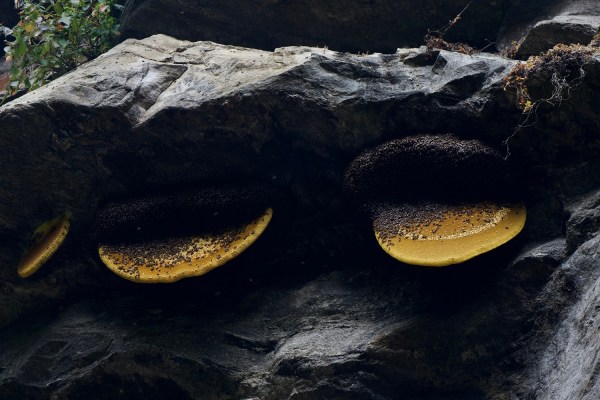All For A Buzz: Nepal’s Rare Himalayan Honey That Takes (And Gets) You High
Daring honey hunters brave dizzying heights and falls in the mountains of Nepal, all for a very special kind of this sweet elixir
Aristotle once said, ‘Honey is the nectar of the gods.’ But in the breathtaking vistas of Nepal’s mountains, one variety sure packs a lot more than just sweetness. Colloquially called ‘Mad Honey’, this bitter red honey from the nectar of rhododendron flowers that grow high up in the mountains is prized for its distinct properties. And what might they be? Well, this honey will get you high.
 Mad honey hives in the mountain regions of Nepal. Picture: Shutterstock
Mad honey hives in the mountain regions of Nepal. Picture: Shutterstock
Harvesting Honey
While many travellers head to Nepal to immerse themselves in its cultural and scenic beauty, a few more daring adventurers choose to hike up the hills, navigate treacherous terrain to accompany local honey hunters as they ascend towering cliffs to reach the hives nestled on the edges of rocky precipices.
Mad honey, also known as ‘Red Honey’ or ‘Grayanotoxin Honey,’ has for centuries been used by local communities, especially Gurungs who reside in the remote regions of the Himalayas, for medicinal purposes and, more lately, for hallucinogenic reasons. The Rhododendron flowers, which grow at higher mountain altitudes, make harvesting this precious variety a daunting task. And the honey bees, Apis Laboriosa, certainly don’t make it any easier.
 The local communities in Nepal have been using mad honey for medicinal purposes. Picture: Shutterstock
The local communities in Nepal have been using mad honey for medicinal purposes. Picture: Shutterstock
In the spring and autumn seasons, honey hunters in Kaski and Lamjung districts venture deep into the lush forests, equipped with what looks like flimsy ropes and ladders, ascending vertical cliffs to reach the hives. With the ever-present risk of falling and getting bitten by the bees, they source and bring back mad honey, which can sell for as high as 10,000 INR for a kilogram, making it one of the most expensive varieties worldwide.
Why Do People Seek Mad Honey?
What sets mad honey apart is its natural psychoactive compound – grayanotoxin- which can induce mild euphoria and relaxation in small amounts. But as with all things, tread lightly because, in more significant amounts, mad honey is known to cause hallucinations, dizziness, and even temporary paralysis.
 Local honey hunters climb hundreds of feet to harvest this honey. Picture: Shutterstock
Local honey hunters climb hundreds of feet to harvest this honey. Picture: Shutterstock
But people look to it for more than simply intoxication; this honey is believed to treat gastrointestinal issues, improve sexual function and relieve arthritis. How accurate these beliefs are is debatable; like with many traditional therapies, there isn’t enough data to make a deduction. But for experimentalists, the lack of evidence is no deterrence.
The Mad Honey Trail
Many tour operators take travellers on a journey to experience Nepal’s mad honey culture. Travellers can venture into remote villages like Ghalegaun and Ghanpokhara, where they can witness the traditional honey-hunting practices and immerse themselves in the local way of life. Guided tours provide insights into the harvesting process, offering a glimpse into the dangers and triumphs of honey hunters.
 Mad honey, due to its intoxicating properties, often sells for exorbitant prices in the market. Picture: Shutterstock
Mad honey, due to its intoxicating properties, often sells for exorbitant prices in the market. Picture: Shutterstock
As with many indigenous traditions, mad honey harvesting faces challenges in the modern world. Climate change, deforestation, and economic pressures threaten both the rhododendron flowers and the delicate ecosystem on which they depend. Growing international demand has also propelled commercialisation, leading to the over-extraction of honey. There have been reports of dwindling honeybee populations due to over-extraction and construction of hydropower projects in the regions where the hives are.
Nonetheless, Mad Honey, a testament to Nepal’s enduring traditions, continues to be sought after, with more and more intrepid travellers reaching the country’s hills for a taste of the nectar of gods.







 A mad honey hunter at work in Nepal. Picture: Shutterstock
A mad honey hunter at work in Nepal. Picture: Shutterstock



